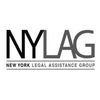
A new settlement requires the US Department of Education to provide debt relief to thousands of former students of a for-profit school, bringing the possibility of millions of dollars of financial alleviation
By Jane Greengold Stevens and Danielle Tarantolo, Co-Directors of Special Litigation Unit, New York Legal Assistance Group
In August, a federal court in Manhattan approved a historic settlement between the U.S. Department of Education and student loan borrowers who attended the “Wilfred Beauty Academy” in the 1980s and ’90s. The settlement brings the possibility of millions of dollars of relief to the approximately 60,000 students who were victimized decades ago by Wilfred—and by the department’s lax oversight of for-profit schools—and have been suffering ever since.
For-profit schools have exploited students for many years, and continue to do so today, but Wilfred was especially nefarious. It enticed vulnerable people, mostly young women, many with limited English abilities, to enroll in search of a better life, and then flagrantly lied to the Department of Education in order to draw student loan dollars to fund those individuals’ tuitions. Specifically, Wilfred falsely certified to the department that these students met the eligibility requirements for the student loans, when they did not. (A recent New York Times article paints a stark portrait of the devastating and lasting impact of this fraud on just two of the school’s victims.)
Eventually, the department wised up to these practices and, along with the Department of Justice, investigated Wilfred for its fraudulent acts. Outcry over rampant violations by schools like Wilfred led Congress in 1992 to enact a statutory remedy: full discharge, or forgiveness of their loans for students who had been “falsely certified.”
When the falsely certified students either graduated from Wilfred (or as often happened, dropped out in frustration), having obtained a useless so-called “education” and with no job prospects at all, they were saddled with debt. Following Congress’s action, the majority of them were eligible to have their loans fully discharged, but there was a big problem: none of them had any idea this was possible. And the only body with the ability, and the obligation, to notify them—the Department of Education—didn’t. In fact, it did the opposite. Year after year, decade after decade, the department, and guaranty agencies holding the loans, continued to collect on these loans from Wilfred borrowers, including forcibly, by intercepting income tax refunds and garnishing wages.
For years, we had helped individual Wilfred borrowers apply for discharges of their loans. In 2013, as a result of a brief mention in a local TV spot, we received calls from 30 Wilfred students in a short period of time. On behalf of a group of borrowers, we formally demanded that the Department of Education fulfill its duty to notify these individuals of their rights, but the department refused. We brought Salazar v. Duncan (now called Salazar v. DeVos) in 2014 to prod the department into action. After several years of hard-fought litigation, the department has now agreed, through the settlement approved this month, to tell all Wilfred borrowers about the possibility of relief from these debts.
Over the next several months, thousands of letters will go out to these borrowers, along with discharge applications. At the time the Department of Education sends these letters, it will suspend collection on the loans for borrowers not in default. If borrowers in default file applications for discharge within 60 days after receiving the letter, collection will be suspended for them too. All suspensions will continue until the department adjudicates the application. By Dec. 9, 2018, the department will have discharged the loans of all applicants found eligible, and by June, 2019, will have refunded all their loan payments.
The value of this relief cannot be overstated, but it’s an after-the-fact fix. The real work for the department is still ahead. As we write this, scores of schools like Wilfred are continuing to defraud student borrowers and the taxpayers, by enticing vulnerable students to enroll and to take out federal student loans, incurring huge debt to pay for worthless educations that they are falsely promised will lead to jobs. Most of the for-profit schools are able to exist only because of the availability of federal student loans.
The department has the tools to crack down on these abuses, yet does not exercise meaningful oversight—with the result that more and more students will find themselves in the same situation as the Wilfred borrowers: finances ruined, and unable to obtain relief from the government agency that was supposed to protect them. We urge the Department of Education to fulfill its obligation to students and U.S. taxpayers by refusing to allow sham schools to participate in the federal student loan program, and establishing meaningful borrower protections when it lets bad schools slip through the cracks.
